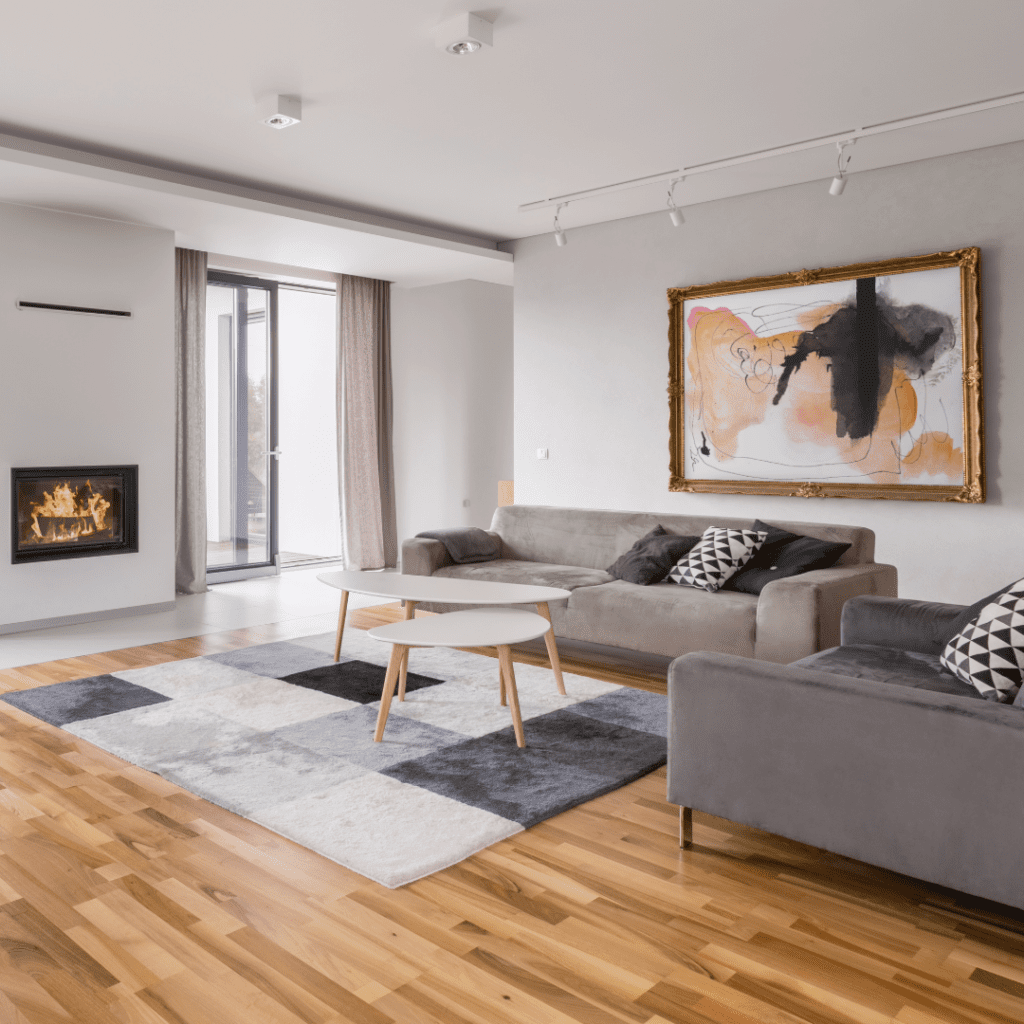How to Choose the Right Flooring for Every Room

Flooring plays a vital role in the look and feel of your home. It’s one of the largest elements in a room and can create an instant impact. The right flooring choice depends on factors like cost, comfort, ease of maintenance, and durability. This post will guide you through selecting the best flooring for each area of your home.
Understanding Your Needs
Before choosing a floor, consider how the space will be used. High-traffic areas require durable options, while comfort might be the priority in bedrooms. Also, think about moisture resistance, especially for bathrooms and kitchens.
Choose Flooring Options
Here’s a breakdown of common flooring types, along with their ideal uses:
- Hardwood:
- Benefits: Durable, beautiful, and long-lasting. It’s also a renewable and recyclable material.
- Best Uses: Living rooms, dining rooms, hallways, and bedrooms. It can also be used in kitchens and bathrooms if precautions are taken, such as wiping up water spills and ensuring good ventilation.
- Considerations: Can be difficult to waterproof, so it’s best to limit its use to half-baths where moisture isn’t a big problem. You should also know what type of finish is on your wood floor and use appropriate cleaning products. Wood floors without a surface finish need a coat of liquid, non-water-based wax. Maintaining a controlled environment (60 to 80f and 35 to 50rh) before, during, and after installation is important to avoid problems like cupping and gapping. Wood can change color over time.
- Benefits: Durable, beautiful, and long-lasting. It’s also a renewable and recyclable material.
- Laminate:
- Description: Laminate floors consist of a durable surface layer, a photographic print layer (to replicate the appearance of other surfaces), and a solid core. It is available in planks or squares.
- Benefits: Water-resistant, durable, easy to install, and available in many styles, from stone tiles to wide wood planks.
- Best Uses: Can be used in most rooms, including living rooms, dining rooms, and even bathrooms, though some manufacturers’ warranties are voided by bathroom use.
- Considerations: Laminate is a “floating floor,” meaning it is not directly fastened to the subfloor. It should not be installed underneath cabinetry. Expansion gaps should be left around the perimeter of the room.
- Ceramic Tile:
- Description: Durable and available in many styles and colors, ceramic tiles are installed with grout between them.
- Benefits: Very durable and can be used in high-traffic areas. They are also easy to clean.
- Best Uses: Bathrooms, kitchens, entries, and living areas. Also good for commercial food preparation areas and operating rooms because of how easy they are to clean.
- Considerations: Can be cold and conduct sound. The grout joints need to be sealed to prevent moisture damage. Proper subfloor preparation is crucial to avoid cracked grout and broken tiles.
- Resilient Flooring (Vinyl, Linoleum, Cork, Rubber):
- Description: Comes in sheets or tiles, which can be easy to install.
- Benefits: Comfortable underfoot, easy to clean, and water-resistant. Available in numerous patterns and colors, often at a cost-effective price.
- Best Uses: Bathrooms, kitchens, laundry rooms, or other areas where water resistance is important.
- Considerations: The subfloor must be level, as resilient flooring is usually thin. Seams can be vulnerable to water damage.
- Carpet:
- Description: Available in conventional, cushion-back, or tile forms.
- Benefits: Soft, warm, comfortable, and can provide a feeling of luxury.
- Best Uses: Bedrooms and living rooms.
- Considerations: Can be hard to clean, especially for those with allergies.
- Concrete:
- Description: Concrete floors can be finished with paint or decorative acid stains.
- Benefits: Tough, durable, and can withstand high traffic and messy spills. Can mimic a variety of flooring types and be a beautiful addition to any room.
- Best Uses: Basements and garages, but increasingly popular for interior spaces.
- Considerations: If unsealed, concrete is vulnerable to stains. It can also develop cracks.
- Parquet Tile:
- Description: Wood tiles that come in blocks with tongue-and-groove edges that snap together.
- Benefits: Offers the beauty of wood in a block shape, and is often affordable.
- Best Uses: Can be used in various rooms to add a decorative element.
- Considerations: Can be installed with self-adhesive backs, or with standard flooring adhesive.
Room-Specific Choices
- Living Rooms: Hardwood, carpet, or laminate are popular choices. Consider comfort and style for this space. If using tile, a border can help to define the space.
- Bedrooms: Carpet provides warmth and comfort, but wood or laminate are good alternatives for those with allergies.
- Kitchens: Tile, laminate, or resilient flooring are best due to their durability and water resistance.
- Bathrooms: Tile or resilient flooring are recommended due to their water resistance. Laminate is also an option, but it is not always recommended by manufacturers.
- Hallways and Entries: Hardwood, tile, or laminate are durable choices for high-traffic areas.
- Basements: Concrete, tile, or engineered wood flooring are good options due to moisture concerns.
Design Considerations
- Color: Choosing light-colored floors can make smaller rooms feel larger, while dark flooring can make a large room more intimate.
- Pattern: Consider the pattern of your floor, especially with parquet and decorative tile, to complement the space.
- Transitions: Use transition strips in doorways to bridge the gap between different floor coverings. Transition moldings can be used when two level surfaces meet in doorways or for expansion joints.
Maintenance
- Cleaning: Different flooring types require specific cleaning methods.
- Repair: Familiarize yourself with how to repair minor scratches, splinters and squeaks in different floor types.
Conclusion
Imagine walking into a room that exudes style, comfort, and functionality – all thanks to the perfect flooring selection. By carefully considering your needs, the unique characteristics of different materials, and your aesthetic, you can create a living space that reflects your personality and enhances your daily life. Make the smart decision and choose the flooring that will enhance your home’s beauty and usability, turning it into a haven you’ll love spending time in.
